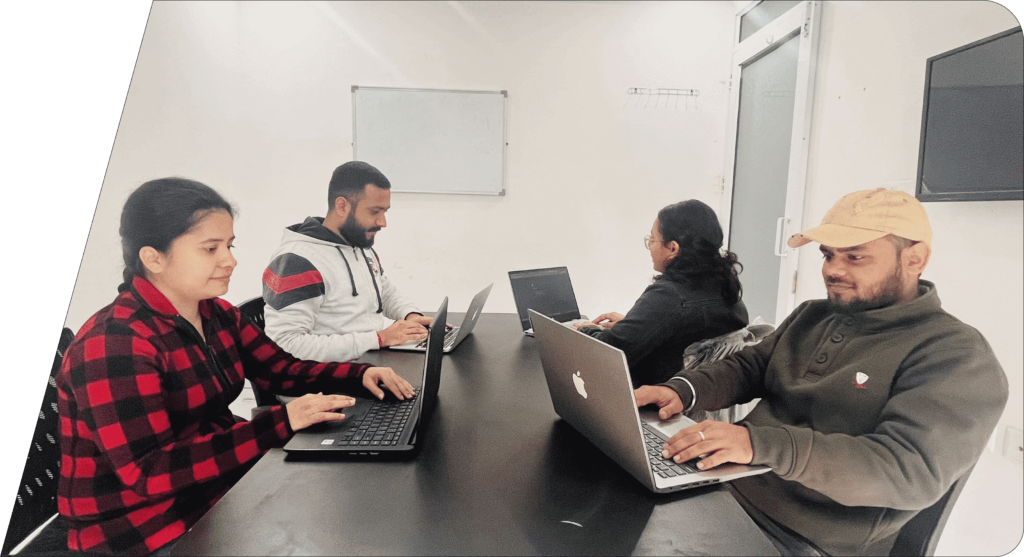- +9190414-55250
- enquiry@csiknowledgehub.in
- Mon - Fri: 9:00 - 18:30
“Code, Design, Create: Your Journey to Web Development Mastery”
The Website Development Course is a comprehensive program designed to equip trainees with the skills and knowledge needed to create professional and engaging websites. Through a combination of theoretical concepts and hands-on practical exercises, students will learn the fundamentals of web development, including HTML, CSS, JavaScript, and responsive design techniques.
The course is designed for individuals with little to no prior experience in web development, making it suitable for beginners. By the end of the course, trainees will have the ability to design and develop professional websites from scratch.
Overall, Our Website Development Course offers a comprehensive and practical learning experience, empowering trainees to create visually appealing, functional, and user-friendly websites.
Running Time: 6 Months

Module 1 : Introduction to Web Development Fundamentals
– Understanding the basics of web development and its importance in the digital era.
-Overview of front-end, back-end, and full-stack development.
– Setting up a development environment and essential tools for website development.- Implementing data models, controllers, and routes for handling requests and responses.
– Introduction to HTML, CSS, and JavaScript as the foundational languages of web development. – Building a simple web page using HTML tags, applying CSS styles, and adding basic interactivity with JavaScript.
Module 2: Building Responsive Web Pages with HTML and CSS
– Understanding responsive web design principles and the importance of mobile-friendly websites.
– Structuring web pages using semantic HTML5 elements and optimizing accessibility.
– Styling web pages using CSS, including selectors, box model, layouts, and typography.
-Implementing responsive design techniques, media queries, and flexible grid systems for cross-device compatibility.
– Enhancing interactivity with CSS transitions and animations.
Module 3 : Adding Interactivity with JavaScript
– Introduction to JavaScript and its role in adding interactivity and dynamic features to websites.
– Working with variables, data types, operators, and control structures in JavaScript.
– Manipulating the Document Object Model (DOM) to dynamically update web page content.
– Implementing event handling, form validation, and integrating external JavaScript libraries.
– Introduction to AJAX for asynchronous data fetching and updating web pages without refreshing.
Module 4 : Back-End Development with Server-Side Technologies
– Introduction to back-end development and server-side technologies such as Node.js or PHP.
– Understanding server-client architecture and working with HTTP requests and responses.
– Creating dynamic web pages by generating server-side content and integrating with databases (e.g., MySQL, MongoDB).
– Implementing user authentication, session management, and security best practices in back-end development.
– Handling form submissions, data validation, and implementing RESTful APIs.
Module 5: Full-Stack Development and Frameworks
– Introduction to full-stack development and its advantages in building end-to-end web applications.
– Exploring popular full-stack frameworks such as Express.js, Django, or Ruby on Rails.
– Integrating front-end and back-end components to create seamless user experiences.
– Implementing data models, controllers, and routes for handling requests and responses.
– Deploying full-stack applications to cloud platforms like Heroku or AWS.
Module 6 : Website Deployment and Performance Optimization
– Understanding the website deployment process and different hosting options.
– Configuring servers, managing domain names, and deploying websites using FTP or Git.
– Optimizing website performance through techniques like image optimization, caching, and minification.
– Testing and debugging websites across multiple browsers and devices.
– Implementing SEO best practices to improve website visibility and search engine rankings.
Module 7 : Website Maintenance and Updates
– Best practices for website maintenance, including version control and backup strategies.
– Monitoring website performance, analyzing user behaviour, and making data-driven improvements.
– Managing content updates, integrating CMS platforms (e.g., WordPress), and implementing website analytics.
– Exploring ongoing learning resources and staying up-to-date with evolving web technologies.
– Introduction to DevOps practices and continuous integration/continuous deployment (CI/CD) pipelines.
Module 8 : Personality Development
Module 8 : Internship With Live Project




